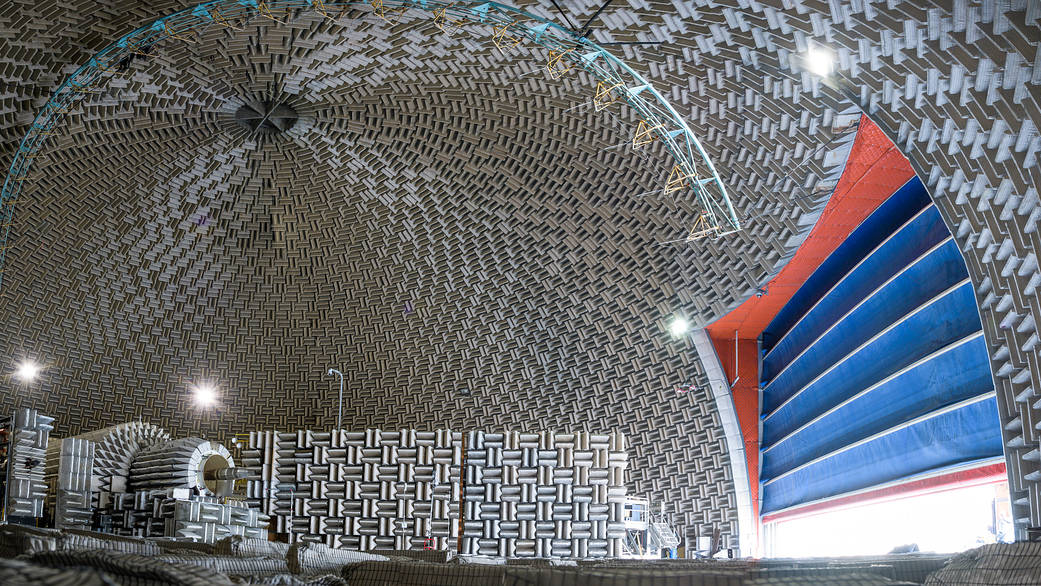As air traffic continues to surge in the U.S., neighbors who live near airports are complaining about the escalating noise. All the while, the demand for faster aircraft that travel at supersonic speeds is accelerating.
To address the expected noise levels of future aircraft, NASA’s Commercial Supersonic Technology project is already developing technologies focused on reducing the noise produced by an aircraft’s engine exhaust.
Acoustics experts at NASA’s Glenn Research Center in Cleveland recently used the center’s Aero-Acoustic Propulsion Laboratory (AAPL) to complete an evaluation on a small-scale model of a Learjet engine exhaust, or nozzle, system.
The blue, curved array at the top of the AAPL dome held microphones for making the noise measurements and simulating a flyover. The large door to the right was opened to exhaust the air from the jet during tests.
“This recent test succeeded in creating a simulated environment which closely matched flight tests, and the results provide us with a unique opportunity to investigate how well noise levels produced in the lab can be compared with flight test noise data,” says Research Engineer Dennis Huff.


















/quantum_physics_bose_einstein_condensate.jpg?w=1024)












